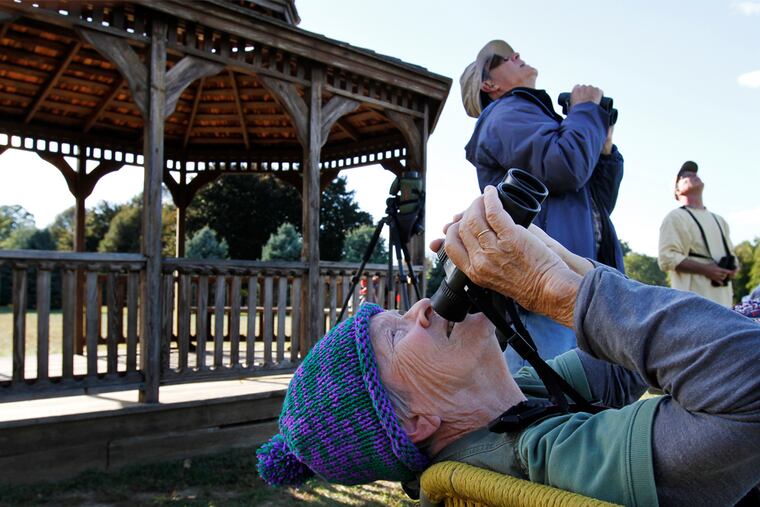Birders are beak deep in the 2014 Christmas Bird Count
Armed with binoculars and spotting scopes, birders are fanning out this month across the region's fields and forests for an annual Audubon Society project to create a snapshot of bird populations in the western hemisphere.

Armed with binoculars and spotting scopes, birders are fanning out this month across the region's fields and forests for an annual Audubon Society project to create a snapshot of bird populations in the western hemisphere.
"I really enjoy knowing that my hobby is providing scientific value down the pike," said Bob Mercer, a volunteer and bird enthusiast who compiled data in Bucks County.
Mercer is one of an estimated 70,000 volunteers who will participate in the Christmas Bird Count, which began Dec. 14 and continues until Jan. 5. The event dates back to 1900, when it was a response to an early-20th-century competition to shoot the most wildlife after Christmas dinner, said Paul Zeph, director of conservation for Audubon Pennsylvania.
"It was about changing that attitude that we should have more reverence and care for the life with which we share the planet," he said.
These days, volunteers are assigned specific days to canvas one of 24,000 regions, each with a diameter of 15 miles, covering two continents, from northern Canada to the southern tip of Argentina and Chile.
Mercer began his count with a group of seven at 6:45 a.m. Saturday in Neshaminy State Park.
"We're walking along and listening and looking for every individual bird we can, and kind of keeping a mental list as we go along of different species and how many there are of them," said Mercer, of Yardley.
By 10:30 a.m., his group recorded 41 species.
Others weren't as fortunate. Andrew Fayer of Fort Washington said bad weather hampered his count around Wyncote on the same day.
"The birds seemed to be hunkered down a little bit," he said.
Another volunteer, Diane Allison, is coordinating a count in upper Bucks County scheduled for Sunday. She emphasized the count's scientific value.
"If you go back in time you can see trends, trends and these ups and downs of species," the retired microbiologist from Tinicum said. "It's a warning or it's a cheer. If the numbers go up it's a positive, and if they go down, why?"
The count is the oldest continuous citizen science activity in the world, Zeph said. It offers years of data on bird populations. Longtime participants like Allison and Mercer say they see changes locally both encouraging and disturbing. Thirty years ago, bald eagles were impossible to find, they said. Counters now regularly encounter the birds, evidence that decades of conservation efforts that included banning the pesticide DDT worked.
The count also provides evidence that climate change is shifting the mix of birds in this region. Birds that rarely traveled this far north, like the white-throated sparrow or the dark-eyed junco, are more common. Meanwhile, some species that used to be common are becoming scarce, Zeph said.
"We do know that the habitat, the plants, the food source that birds need to survive . . . they can't evolve and adapt as fast as our climate is warming," he said.
Birding is growing as a hobby, some volunteers said. That's partly because the Internet has made it easier for a newcomer to learn about the birds in the neighborhood. Allison thought it was also due to the unique connection people have with birds.
"They're close at hand," she said. "These days people are a little more separated from nature, and it's a piece of nature that's close to home."
BY THE NUMBERS
115
annual Audubon Christmas Bird Counts.
71,659
observers in the 2013-14 count.
66M
birds counted last year.
25
separate bird counts held on Dec. 25, 1900, the first year of the Christmas Bird Count.
2,408
separate bird counts held last year.
305
species of birds reported in North America during the winter months.
800
species of birds reported overall in the United States.
654
species of birds native to the continental U.S.
Source: www.Audubon.orgEndText